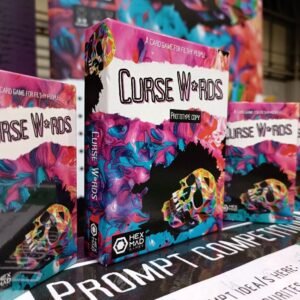By Jim Hingst
Paint terminology is often misused. In this article, Jim Hingst defines frequently used terms used in the painting field.
The chemistry of paint is relatively simple. What can be confusing is the terminology. Even experienced painters misuse the nomenclature. The purpose of this blog post is to define the names of the ingredients.
Paint consists of solid ingredients and a liquid part. The liquid portion is called the vehicle. The vehicle is comprised of the resin, which is the paint’s binder, and a solvent, which is water or an oil based liquid. Other liquid components of the paint include additives, such as driers, wetting agents, and UV inhibitors. Additives also include solids, such as talc, mica and ground glass.
The solvent solvates or dissolves the resin. The addition of the solvent thins or lowers the viscosity of the paint, making a thick paint easier to brush or spray. The solvent does not become part of the dried paint film. Instead it evaporates into thin air. The solvent, which can be either an oil based liquid or water, is also referred to as the dilutent.
The evaporation of the solvent generally does not cause the paint to dry. Lacquer is an exception. Instead, as the paint oxidizes, the resin polymerizes and then the polymers crosslink.
Pigments are granular particles, which are suspended in the vehicle. These solid particles give paint its color. Compared with dyes, pigments are insoluble. Many pigments are natural ingredients. These include charcoal, soot, colored clays, which include sienna an umbers, as well as minerals, such as lapis lazuli. Other pigments are synthetic or man-made molecules.
The resin is the binder that holds the ingredients together and anchors the paint to the substrate. Some resins are natural products, such as linseed oil, walnut oil, egg yolk and gum Arabic. Other resins are synthetic. Synthetic resins include acrylic and polyvinyl acrylic polymers and alkyd resin.
In addition to acting as the binder, resin also provides the paint with its various physical properties and performance characteristics. Different types of paint use different binders. See the chart below.
|
Paint Type
|
Resin
|
|
Artist’s Oil Paint
|
drying oil, such as linseed oil
|
|
Tempera
|
egg yolk
|
|
Water color &
Gouache
|
gum Arabic
|
|
Latex & Acrylic
|
synthetic polymers, such as acrylic and polyvinyl acrylic
|
|
Enamel
|
alkyd resin
|
|
Polyurethane
|
(2 part system) polyol resin mixed with a polyisocyanate hardener
|
|
Nitrocellulose Lacquer
|
Nitrocellulose
|
|
Milk paint
|
Casein (non-fat milk curds)
|
Do You Have Questions or Comments?
RELATED ARTICLES
Painting Powder Coated Metal Surfaces
Repainting Wood Surfaces
Using Linseed Oil to Make a Medium
Why Paint Wrinkles
Why Enamels can Dry Slowly
Why Paints and Pigments Degrade
How Dyes and Pigments Differ
Paint Pigment Basics
Safely Working with Pigment Powders
Characteristics of Pigments Compared to Dyes
Physical Properties of Paints and Pigments
Troubleshooting and Preventing Paint Problems
How to Clean Brushes Used for Water-Based Paints
Proper Prep Prior to Repainting Walls
Coating Woodworking Projects with Epoxy Resin
The Practicality of Repainting an Old Acrylic Sign
Acrylic Mediums & Additives
Acrylic Glazes
Finishing Tips
Blending Colors
Painting with a Limited Palette
Making Oil Paint
Oiling Out a Canvas for Oil Painting
Zinsser Bulls Eye 1-2-3 Primer
Mediums for Oil Painting
Faster, Easier Paint Clean Up
Penetrol Paint Conditioner
Shades of Black
Flesh Tone Paint Recipe
Why Yellow Ocher and Naples Yellow are Important in Painting Fleshtones
White Lead Oil Paint
Best White Paint for Oil Painting
Safely Working with Pigment Powders
When to Thin Paint with Naphtha
Damar Varnish Recipe
Fat Over Lean Rule
Applying a Wiping Varnish to Your Carving
Asphaltum
Essential Solvents for Sign Painters
Traditional Gesso Recipe for Encaustic Painters
Painting with Gouache
Epoxy Resins
Bondo Tips
Flattening Paste for Enamel Paint
Paint Chemistry Terminology
Scratching the Surface with Grey Scotch-Brite Scuff Pads
About Jim Hingst: Sign business authority on vehicle wraps, vinyl graphics, screen printing, marketing, sales, gold leaf, woodcarving and painting.
After fourteen years as Business Development Manager at RTape, Jim Hingst retired. He was involved in many facets of the company’s business, including marketing, sales, product development and technical service.
Hingst began his career 42 years ago in the graphic arts field creating and producing advertising and promotional materials for a large test equipment manufacturer. Working for offset printers, large format screen printers, vinyl film manufacturers, and application tape companies, his experience included estimating, production planning, purchasing and production art, as well as sales and marketing. In his capacity as a salesman, Hingst was recognized with numerous sales achievement awards.
Drawing on his experience in production and as graphics installation subcontractor, Hingst provided the industry with practical advice, publishing more than 150 articles for publications, such as Signs Canada, SignCraft, Signs of the Times, Screen Printing, Sign and Digital Graphics and Sign Builder Illustrated. He also posted more than 500 stories on his blog (hingstssignpost.blogspot.com). In 2007 Hingst’s book, Vinyl Sign Techniques, was published. Vinyl Sign Techniques is available at sign supply distributors and at Amazon.
© Jim Hingst 2018




